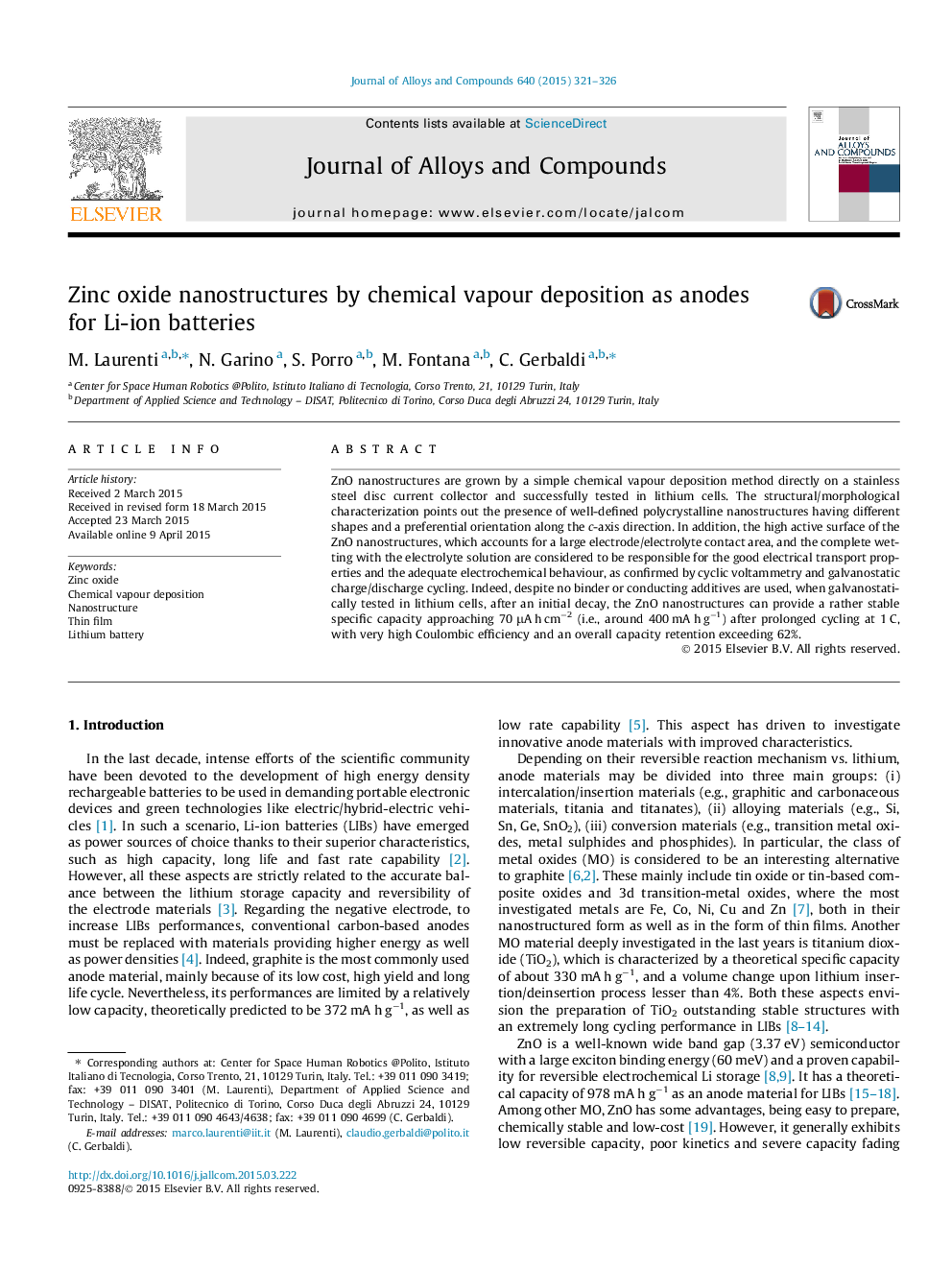| Article ID | Journal | Published Year | Pages | File Type |
|---|---|---|---|---|
| 1608978 | Journal of Alloys and Compounds | 2015 | 6 Pages |
•ZnO nanostructures are grown by simple chemical vapour deposition.•Polycrystalline nanostructured porous thin film is obtained.•Film exhibits stable specific capacity (∼400 mA h g−1) after prolonged cycling.•CVD-grown ZnO nanostructures show promising prospects as Li-ion battery anode.
ZnO nanostructures are grown by a simple chemical vapour deposition method directly on a stainless steel disc current collector and successfully tested in lithium cells. The structural/morphological characterization points out the presence of well-defined polycrystalline nanostructures having different shapes and a preferential orientation along the c-axis direction. In addition, the high active surface of the ZnO nanostructures, which accounts for a large electrode/electrolyte contact area, and the complete wetting with the electrolyte solution are considered to be responsible for the good electrical transport properties and the adequate electrochemical behaviour, as confirmed by cyclic voltammetry and galvanostatic charge/discharge cycling. Indeed, despite no binder or conducting additives are used, when galvanostatically tested in lithium cells, after an initial decay, the ZnO nanostructures can provide a rather stable specific capacity approaching 70 μA h cm−2 (i.e., around 400 mA h g−1) after prolonged cycling at 1 C, with very high Coulombic efficiency and an overall capacity retention exceeding 62%.
